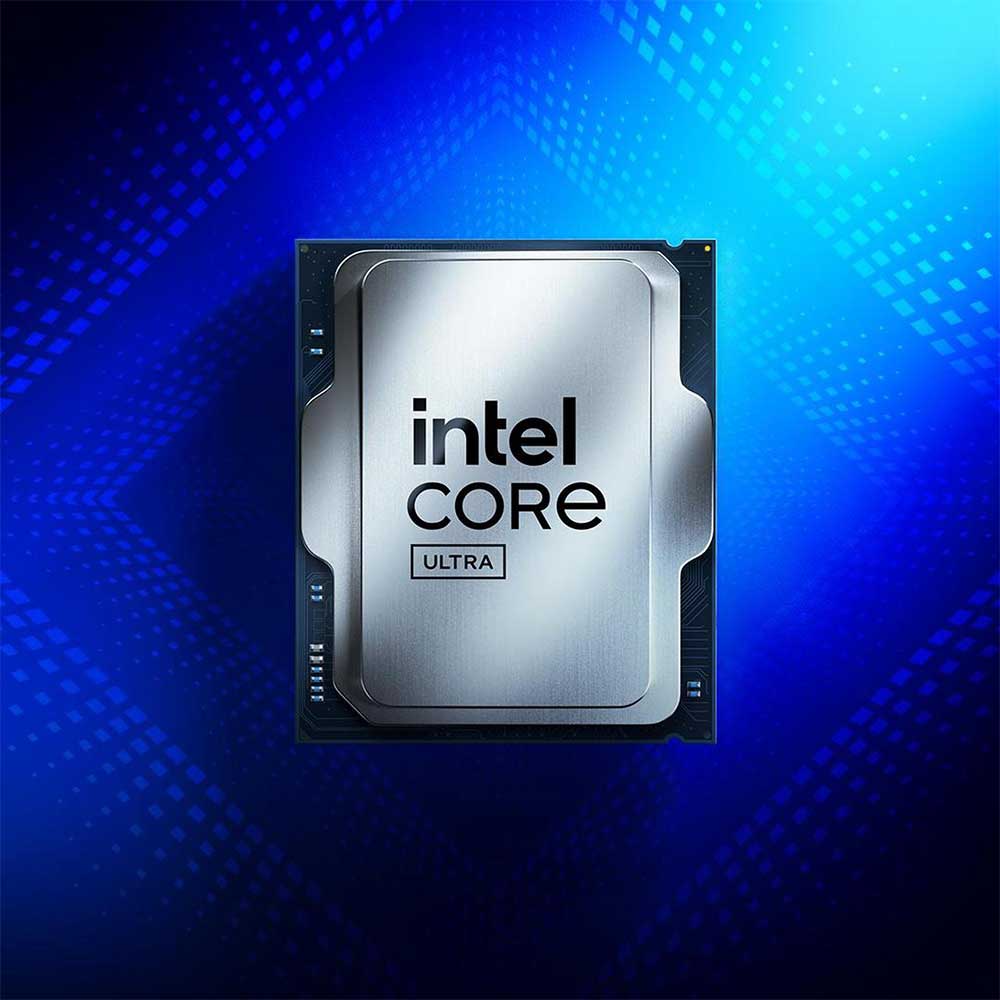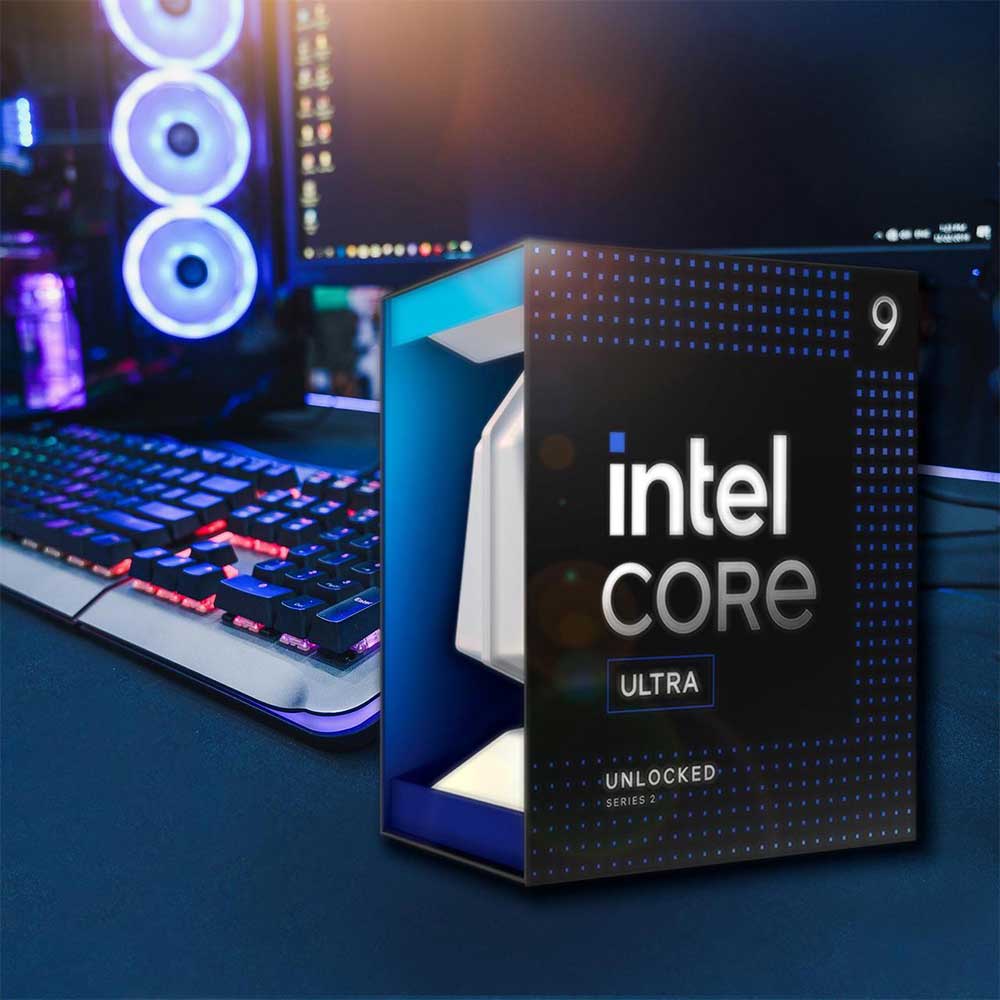The Intel Core Ultra 9 285K represents the flagship of Intel’s “Arrow Lake-S” desktop family, built to deliver a modern combination of raw cores, hybrid architecture, and next-generation platform features. Here’s a deep dive into what the chip offers, where it stands, and what you should know before including it in your build.
Architecture & Core Configuration
The 285K uses a hybrid core design: it incorporates 8 performance cores (P-cores) and 16 efficient cores (E-cores), giving a total of 24 cores and 24 threads. Intel+1
-
Performance-cores handle the heavy lifting (gaming, single-threaded workloads, high-frequency tasks).
-
Efficient-cores support background tasks, multi-threaded workloads and offer better power efficiency when full turbo isn’t needed.
-
The Smart Cache (L3) is 36 MB, with 40 MB of L2 cache across the cores. Intel+1
-
Built on TSMC’s N3B node (compute tile) and multi-die packaging via Arrow Lake. Wikipedia
This core layout is a significant step beyond many previous generation mainstream CPUs, offering a much higher total core count for heavily threaded workloads like content creation, compiling, simulation or heavy multitasking.
Clock Speeds & Power
-
Max Turbo Frequency: up to 5.7 GHz on the P-cores. Intel+1
-
Performance-core Base Frequency: ~3.7 GHz
-
Efficient-core Base Frequency: ~3.2 GHz (approximate) Intel
-
Processor Base Power: 125 W (typical)
-
Maximum Turbo Power: up to 250 W under heavy burst loads. Intel+1
-
Platform wise: The LGA 1851 socket (new for Arrow Lake) and Z890 chipset support at launch. Tom’s Hardware
In practice, this means you’ll need a capable cooling solution and robust motherboard power delivery to extract optimum performance — especially when targeting all-core workloads or high end gaming/creator builds. At the same time, the architecture emphasises better efficiency than prior generations, particularly in less extreme loads. Tom’s Hardware+1
Platform & Features
-
Memory support: modern DDR5 (check motherboard support for speeds, Intel mentions up to DDR5-6400+ in some configurations). Intel Community
-
PCI Express support: Offers PCIe 5.0 lanes (for next-gen GPUs, NVMe) plus PCIe 4.0 via the chipset. Tom’s Hardware+1
-
Integrated graphics: Includes Intel Graphics (Xe-based), which can serve as a backup or basic display engine if you don’t have a discrete GPU. Best Buy
-
NPU & AI support: The 285K includes Intel’s first desktop Neural Processing Unit (NPU) for AI acceleration and features like Intel DL Boost, OpenVINO, ONNX RT etc. Intel+1
These platform upgrades make the 285K more future-ready, especially for users planning high-end builds, workstation use, or leveraging AI/ML workloads or richer I/O requirements.
Performance: Strengths & Weaknesses
Strengths:
-
Excellent multi-core performance thanks to the 24-core (8P+16E) layout — content creators, video editors, 3D modelling users will benefit.
-
Strong single-threaded/turbo performance with 5.7GHz boost, making it competitive for demanding tasks.
-
Efficient-core help gives improved power efficiency in mixed workloads vs older large-P-core-only designs.
-
Cutting-edge platform features (PCIe 5.0, DDR5, NPU) mean the chip is future-proof for several years.
Weaknesses / Considerations:
-
Some reviews highlight that in pure gaming scenarios the 285K doesn’t always outperform its predecessor or AMD rivals. For instance, benchmark tests show that in some titles the 285K fell behind the previous generation 14900K. Tom’s Hardware+1
-
The new socket (LGA 1851) means older motherboards are incompatible — your upgrade path may require new board + cooler mounting verification.
-
High maximum turbo power (250 W) means cooling and power supply requirements are serious — for optimal performance you’ll need a solid cooling solution and strong PSU.
-
Price-to-performance in some segments (e.g., gaming-focused builds) is contested, especially when stacked against AMD’s X3D chips which excel in gaming. Tom’s Hardware+1
In brief: if your workload is mixed (gaming + creation) and you want high core count and future platform readiness, the 285K is compelling. If you’re strictly building a gaming-only PC and obsess about 1% lows and ultra high refresh gaming, you might consider other options (or wait) for optimal value.
Ideal Use-Cases
-
Creator Workstations: Video editing (4K/8K), 3D rendering, software compiling: the 24-core count gives real benefits here.
-
High-End Gaming / Streaming Builds: With a top tier GPU, the 285K provides strong head-room, especially for streaming + gaming + background tasks.
-
Future-Proof Enthusiast Builds: If you plan to keep your platform for many years (e.g., 5+ years), the PCIe 5 and DDR5 support makes sense.
-
AI/ML & AI-enabled Workflows: The on-chip NPU and DL Boost support make this processor relevant for AI-accelerated tasks, though this segment is niche for many gamers.
Cooling, Motherboard & Upgrade Considerations
-
Cooling: Given the turbo power up to 250 W, a high-quality AIO liquid cooler (240 mm or above) or similarly capable air cooler is recommended, especially if you’ll push heavy loads or OC.
-
Motherboard: You’ll need a motherboard with the LGA 1851 socket (e.g., Z890 chipset) and robust VRM design. Pay attention to BIOS support and board features (e.g., dual-bios, power phases, thermal design).
-
Memory: While DDR5 is the platform norm, and high speeds (DDR5-6400+) are supported, check that your board supports the memory speeds and capacity you intend. Some forum threads highlight memory limits/configuration nuances. Intel Community
-
Future upgrade path: LGA 1851 is new, so future CPU compatibility may be limited — if you upgrade motherboard now you’ll want to feel comfortable that the socket has enough longevity for your needs.
-
Power Supply: A good quality PSU (850 W or more, depending on GPU and other components) is advisable to ensure stable power under load.
Final Verdict
The Intel Core Ultra 9 285K is a powerful, feature-rich flagship desktop processor that delivers a strong foundation for high-end PC builds. Its hybrid core architecture (8P+16E), high turbo clocks, modern platform features (PCIe 5.0, DDR5, NPU) and 24-core layout makes it an excellent choice for creators, power users and long-term builds.
However, it’s not a perfect “best gaming chip” in every scenario — gaming-specific reviews point out that it doesn’t always outpace prior gen or rival AMD parts in every title. If you are purely focused on gaming and maximizing frames per second, you may want to weigh other alternatives or wait for next generation. On the other hand, if your workload is diverse (gaming + streaming + creation) or you’re building for the future, the 285K gives you top-tier cores today.
In summary, if you’re ready to invest in a robust platform, require serious core count and performance, and want future-proofing, the Intel Core Ultra 9 285K is an excellent choice. Just plan your build around it thoughtfully — cooling, motherboard and power supply matter.











